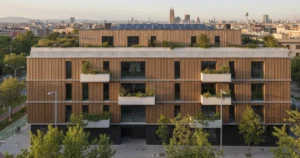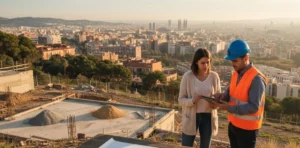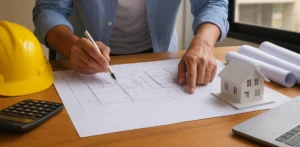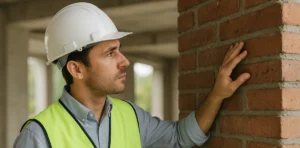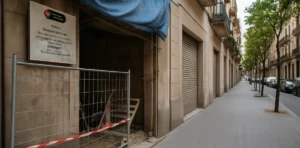Table of Contents
- Requirements for installing an elevator in a community
- Agreement between neighbors and the owners' association
- Costs, assistance, and financing
- Construction phases and estimated times
- Mandatory maintenance and inspections
- Benefits of having an elevator in the community
- Are you thinking about installing an elevator in your community?
Deciding to install an elevator in a residential community is one of the most valuable improvements a building can make. Not only does it improve accessibility and the well-being of those who live there, but it also enhances the value of the homes and adapts to the needs of an increasingly aging population.
However, this type of action is not as simple as it seems. It requires compliance with legal, technical, and administrative requirements that, if ignored, can delay or even prevent the project. That's why it's so important to understand the process, know what the law says, and have the support of professionals who know every detail.
Throughout this article, we explain step by step everything you need to know if you're considering installing an elevator in your community. From the procedures to the costs, including regulations, available grants, and the decisions that must be made at the neighborhood council meeting.
Requirements for installing an elevator in a community
Legal regulations governing the installation
Spanish legislation is quite clear on this matter. According to the Horizontal Property Law, if a person with a disability or over 70 years of age lives in a community, the installation of an elevator is mandatory, provided the cost per resident does not exceed twelve ordinary monthly payments of common expenses. In other words, even if there is no majority, if these conditions are met, the work must be carried out.
On the other hand, the Technical Building Code also establishes accessibility criteria that must be met in building renovations. Furthermore, some autonomous communities or city councils—such as Barcelona and Madrid—have their own regulations that are in addition to the national regulations.
For more information, you can consult this official accessibility guide from the Ministry of Transport, Mobility and Urban Agenda.
Necessary permits and documentation
Installing an elevator is no small undertaking. A technical project approved by a certified professional is required, which is submitted to the City Council along with the building permit application. This is typically a major building permit, and its approval can take several weeks or even months, depending on the municipality.
It's also necessary to comply with the building's planning regulations, especially if it's protected or if the elevator will be installed on the façade or in a light well.
Agreement between neighbors and the owners' association
What majority is needed to approve the work?
In the absence of persons with disabilities or those over 70 years of age, a favorable vote of three-fifths of the owners and the participation quotas is required. This must be approved at a meeting convened specifically for this purpose, and the minutes must record that this item has been discussed on the agenda.
It's important to know that the law allows the community to impose this improvement, even on neighbors who vote against it, as long as the required majority is reached.
Cases where a majority is not required
The regulations also contemplate exceptional situations. If there are residents with reduced mobility or over 70 years of age, and the cost is not disproportionate, the community must carry out the installation even if there is no majority. This is stipulated in Article 10.1.b of the Horizontal Property Law, and seeks to guarantee the right to universal accessibility.
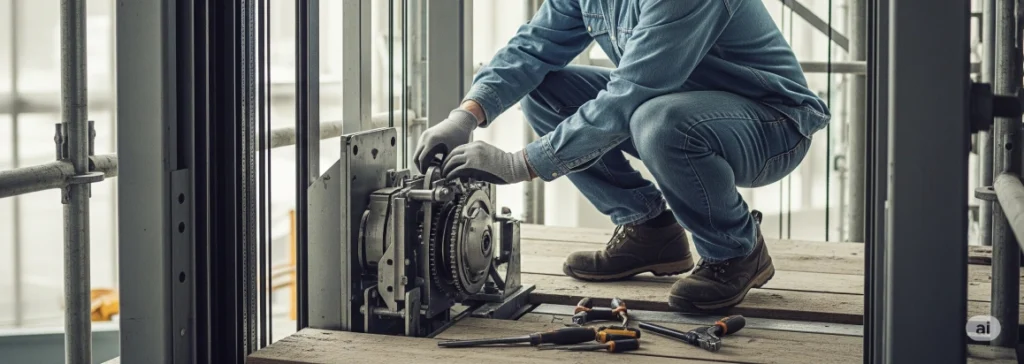
Costs, assistance, and financing
How expenses are distributed among neighbors
One of the most common questions is who pays for the elevator. The general rule is that costs are shared based on each unit's share of the property. That is, based on the percentage each resident holds in the building as a whole.
Conflicts often arise with neighbors living on the ground or first floors, as they feel they won't be using it. However, unless the bylaws state otherwise, the law establishes that everyone must contribute.
Available grants
Every year, public funding is available for accessibility improvements. In Catalonia, for example, the Barcelona Housing Consortium offers grants that can cover part of the cost of an elevator, especially in older buildings.
For more information, you can visit the official website of the Generalitat of Catalonia.
There are also financial institutions that offer lines of credit for communities, with conditions tailored to this type of project.
Construction phases and estimated times
Most common types of elevators
Not all buildings have the same amount of available space, so there are different solutions. Some of the most common are:
- Conventional elevators with machine room.
- Machine room-less elevators (more compact).
- Outdoor elevators, installed in courtyards or facades.
The project manager will evaluate the best option for the building.
Deadlines for the execution of the work
From the drafting of the project until the elevator is operational, the estimated time is between three and six months. This includes licensing, civil works (such as shaft opening or foundation), mechanical installation, and legalization of the elevator with the relevant authorities.
Mandatory maintenance and inspections
Obligation to contract maintenance
Once installed, the elevator must have a maintenance contract with an authorized company. Periodic inspections are mandatory, as they ensure the safety and proper functioning of the equipment.
Technical inspections and reviews
Depending on the use, regulations establish a specific frequency for inspections. For example, community elevators must be inspected every four years if they have between four and 20 stops. These inspections are regulated by the safety regulations for elevators.
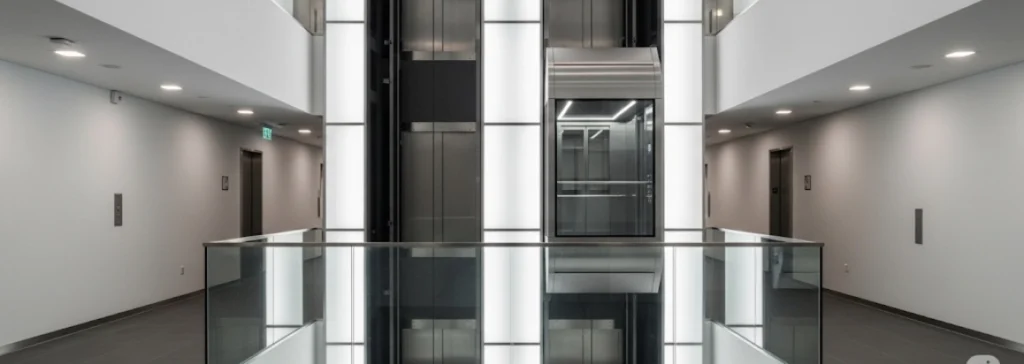
Benefits of having an elevator in the community
Improved accessibility for all
Having an elevator doesn't just benefit the elderly or people with disabilities. It makes life easier for families with babies, neighbors with suitcases or packages, and generally improves the quality of life in the building.
It also allows people with reduced mobility to continue living in their homes, which is key in terms of social inclusion.
Revaluation of the building
A community with an elevator has a higher market value. Many buyers dismiss buildings without elevators altogether, and real estate websites confirm that an apartment with an elevator sells better and faster.
The investment, therefore, not only improves daily life, but also has economic returns in the medium and long term.
Are you thinking about installing an elevator in your community?
If your community is considering installing an elevator, we can help you from the very first step. We have years of experience supporting residential communities throughout the entire process: from initial legal and technical advice to the execution of the work and final approval.
I specialize in accessibility and building renovation, and I'm thoroughly familiar with the legal and technical requirements for this type of project. I know how to optimize costs, reduce time, and process all the necessary permits so you don't have to worry about a thing.
We invite you to review all of our services for communities. If you want to take the next step, request a personalized quote without obligation. We guarantee professionalism, experience, and a friendly service. Improve your building and your daily life with safe, legal, and long-lasting solutions.
